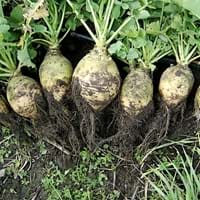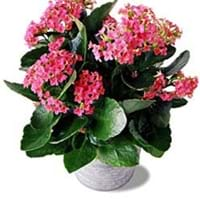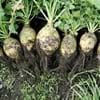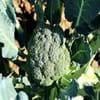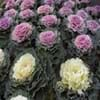Life Span
Biennial
Annual or Biennial
Type
Vegetable
Flowering Plants, Shrub
Origin
Hybrid origin
Not Available
Types
Argentine canola
annua – annual rape and summer rape
swede rape
pabularia – Hanover-salad
Kalanchoe velutina, Kalanchoe hildebrantii
Habitat
Not Available
Deciduous forests, Tropical regions
USDA Hardiness Zone
6-9
Not Available
AHS Heat Zone
9-3
Not Available
Sunset Zone
A1, A2, A3, H1, H2, 1a, 1b, 2a, 2b, 3a, 3b, 4, 5, 6, 7, 8, 9, 10, 11, 12, 13, 14, 15, 16, 17, 18, 19, 20, 21, 22, 23, 24
Not Available
Habit
Rosette/Stemless
Not Available
Minimum Height
Not Available
Minimum Width
Not Available
Flower Color
Yellow, Light Yellow
Not Available
Flower Color Modifier
Bicolor
Not Available
Fruit Color
Tan, Brown
Not Available
Leaf Color in Spring
Black, Green, Green, Dark Green
Not Available
Leaf Color in Summer
Green, Blue Green
Not Available
Leaf Color in Fall
Green, Blue Green
Not Available
Leaf Color in Winter
Green, Blue Green
Not Available
Leaf Shape
Ovate
Oval with toothed margin
Plant Season
Spring, Summer, Fall, Winter
Not Available
Sunlight
Full Sun
Not Available
Growth Rate
Medium
Not Available
Type of Soil
Loam, Sand
Not Available
The pH of Soil
Acidic, Neutral
Not Available
Soil Drainage
Well drained
Not Available
Bloom Time
Spring, Late Spring, Early Summer, Summer
Not Available
Repeat Bloomer
No
Not Available
Tolerances
Drought
Not Available
Where to Plant?
Ground
Container, Ground
How to Plant?
Seedlings
From bulbs, Vegetative Reproduction
Plant Maintenance
Medium
Medium
Watering Requirements
Water frequently while growing, Water slowly, and allow to dry completely between soakings
Keep ground moist
In Summer
Lots of watering
Moderate
In Spring
Moderate
Moderate
In Winter
Average Water
Average Water
Soil pH
Acidic, Neutral
Not Available
Soil Type
Loam, Sand
Loamy, Well drained
Soil Drainage Capacity
Well drained
Not Available
Sun Exposure
Full Sun
Not Available
Pruning
Remove damaged leaves, Remove dead branches, Remove dead leaves
Prune for shortening long shoots, pruning needed for strong structure
Fertilizers
All-Purpose Liquid Fertilizer, Apply N-P-K
slow-release fertilizers
Pests and Diseases
Blackleg, Clubroot, Flea Beetles, Grasshoppers, Lygus bugs, Red blotch, Slugs, Snails, Verticillium Wilt, white rust
Bacteria wilt, Crown gall, Mosaic viruses, Red blotch
Plant Tolerance
Drought, Humidity, Shade areas
Shade areas, Shallow soil
Flower Petal Number
Single
Not Available
Showy Fruit
No
Not Available
Edible Fruit
No
Not Available
Fragrant Flower
No
Not Available
Fragrant Fruit
No
Not Available
Fragrant Leaf
Yes
Not Available
Fragrant Bark/Stem
No
Not Available
Showy Foliage
No
Not Available
Showy Bark
No
Not Available
Foliage Texture
Coarse
Bold
Foliage Sheen
Matte
Not Available
Invasive
No
Not Available
Self-Sowing
Yes
Not Available
Attracts
Flea beetles, Moths, Snails
Bees, Butterflies
Allergy
Asthma, Mild Allergen, Toxic
breathing problems, sneezing
Aesthetic Uses
Not Used For Aesthetic Purpose
Beautification, Bouquets
Beauty Benefits
Not Available
For treating wrinkles, Improve skin tone
Environmental Uses
Air purification
Food for insects, Very little waste
Medicinal Uses
Diuretic, Emollient
Immunity, Inflammation, Jaundice, Kidney Stones, Neurodegenerative Disorders, Piles
Part of Plant Used
Leaves, Root
Bark, Fruits
Other Uses
Not Available
Making Perfumes, Used as Ornamental plant
Used As Indoor Plant
No
Yes
Used As Outdoor Plant
Yes
Yes
Garden Design
Edible, Herb / Vegetable, Mixed Border
Not Available
Botanical Name
BRASSICA napus var. napobrassica
KALANCHOE 'Mirabella'
Common Name
Rutabaga, Swede , Swedish Turnip
Kalanchoe
In German
Steckrübe
Kalanchoe
In French
rutabaga
Kalanchoe
In Spanish
nabo sueco
Kalanchoe
In Greek
μέγα γογγύλιον
Kalanchoe
In Portuguese
Rotavaga
Kalanchoe
In Polish
Rotavaga
Kalanchoe
In Latin
Rotavaga
Kalanchoe
Phylum
Tracheophyta
Angiosperms
Class
Magnoliopsida
Magnoliopsida
Order
Brassicales
Rosales
Family
Brassicaceae
Crassulaceae
Clade
Angiosperms, Eudicots, Rosids
Angiosperms, Eudicots
Tribe
Not Available
Not Available
Subfamily
Not Available
Not Available
Number of Species
Not Available
Importance of Rutabaga and Kalanchoe
Want to have the most appropriate plant for your garden? You might want to know the importance of Rutabaga and Kalanchoe. Basically, these two plants vary in many aspects. Compare Rutabaga and Kalanchoe as they differ in many characteristics such as their life, care, benefits, facts, etc. Every gardener must at least have the slightest clue about the plants he wants to plant in his garden. Compare their benefits, which differ in many ways like facts and uses. The medicinal use of Rutabaga is Diuretic and Emollient whereas of Kalanchoe is Immunity, Inflammation, Jaundice, Kidney Stones, Neurodegenerative Disorders and Piles. Rutabaga has beauty benefits as follows: Not Available while Kalanchoe has beauty benefits as follows: Not Available.
Compare Facts of Rutabaga vs Kalanchoe
How to choose the best garden plant for your garden depending upon its facts? Here garden plant comparison will help you to solve this query. Compare the facts of Rutabaga vs Kalanchoe and know which one to choose. As garden plants have benefits and other uses, allergy is also a major drawback of plants for some people. Allergic reactions of Rutabaga are Asthma, Mild Allergen and Toxic whereas of Kalanchoe have breathing problems and sneezing respectively. Having a fruit bearing plant in your garden can be a plus point of your garden. Rutabaga has no showy fruits and Kalanchoe has no showy fruits. Also Rutabaga is not flowering and Kalanchoe is not flowering . You can compare Rutabaga and Kalanchoe facts and facts of other plants too.
